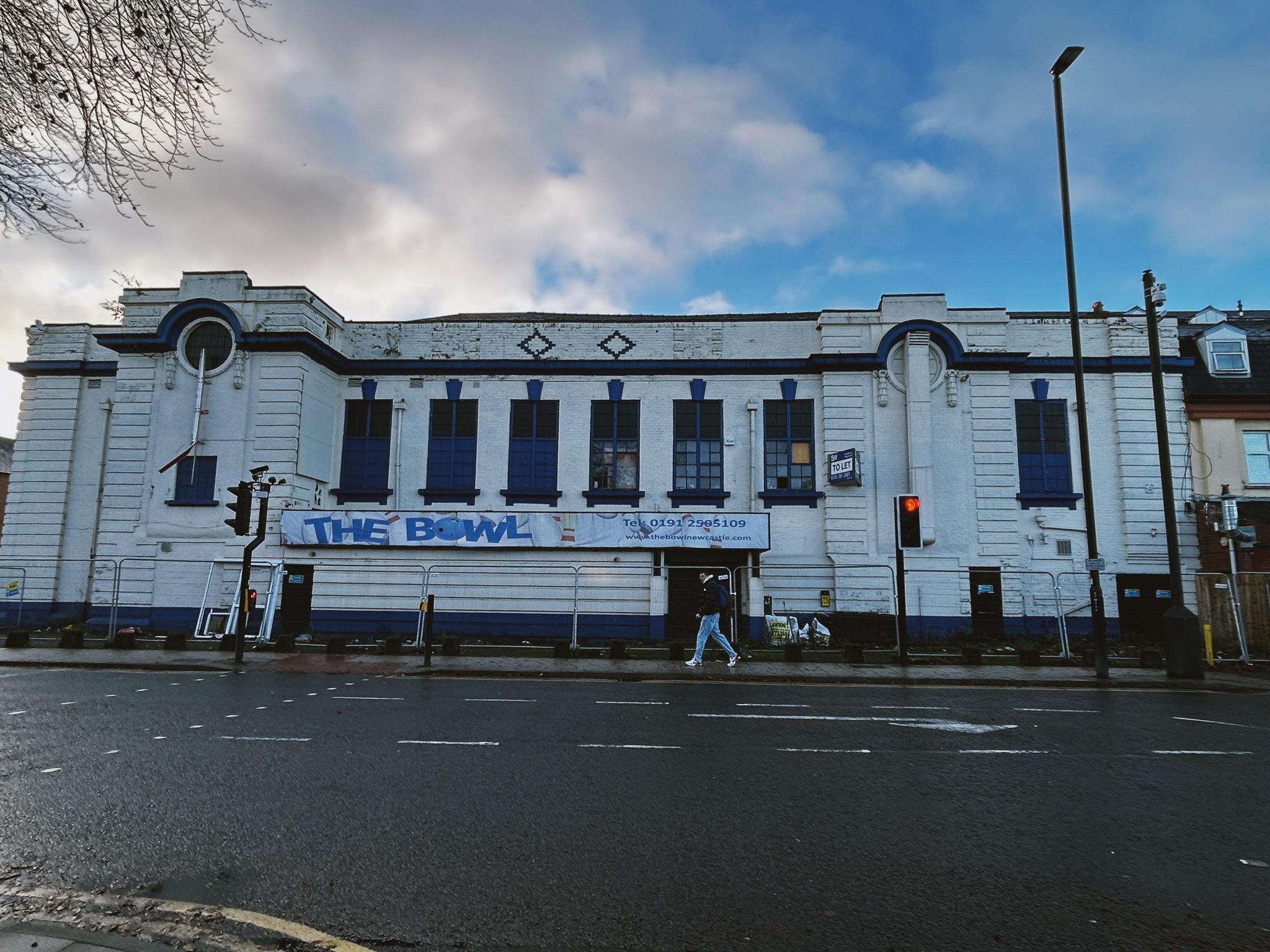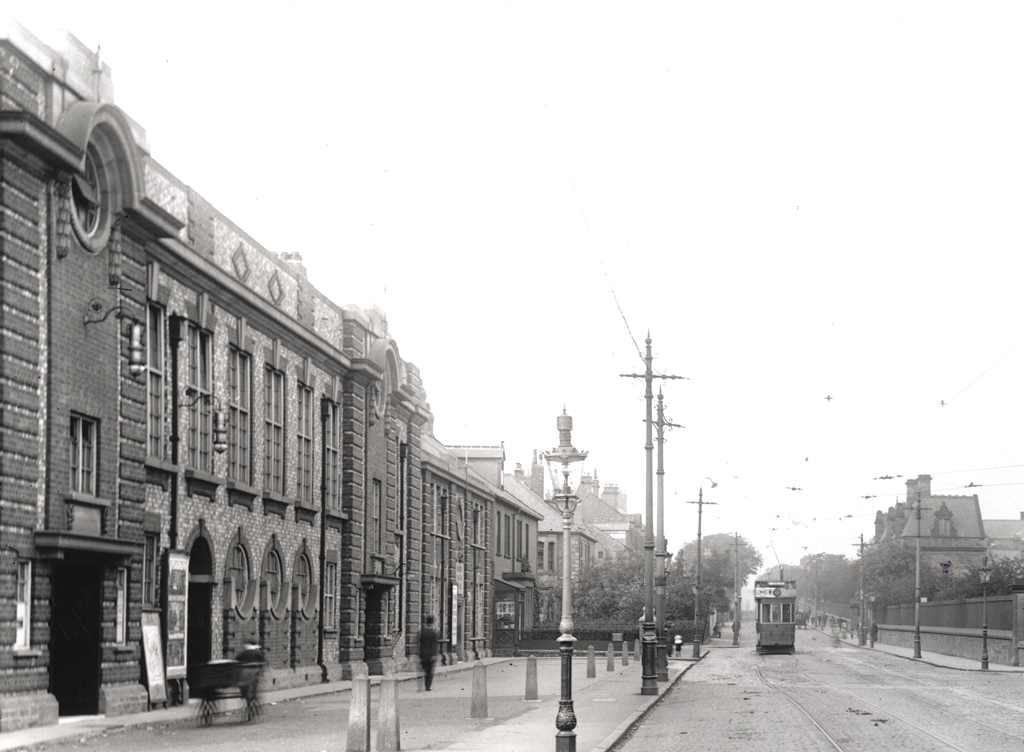
Arthurs Hill, Newcastle
Brighton Electric Theatre
Last Updated:
15 Dec 2023
Arthurs Hill, Newcastle
This is a
Dance Hall, Billiard Hall, Cinema, Bowling Alley
54.973602, -1.642649
Founded in
Current status is
Extant
Designer (if known):
Marshall & Tweedy

Derelict as of December 2023
3 years after closure, it's looking like there's very little hope for the bowling alley on Westgate Road.
This was originally a three phase entertainment complex called the Brighton. The first part opened in 1911 as a dance hall, in 1912 a 9 table billiard hall and by the early 1920s a cinema.
It was designed by Marshall & Tweedy - a well known local architects firm, and was built to accomodate 1099 seats. It was also the first suburban cinema in the city to incorporate the Cinemascope in later decades. They also designed the Whitley Bay Playhouse, as well as municipal projects like the Portland Terrace Bus Depot at Sandyford.
In the early years silent films at the "electric theatre" were accompanied by Goffin's Bijou Orchestra, who had already made a name for themselves on the circuit. They'd performed Mozart, Donozetti etc in the assembly hall here for the decade prior. Who said Westgate Road wasn't cultured?
By 1947, the Brighton was taken over by WJ Clavering, a bit of a local cinema tycoon who also owned the Plaza on the West Road and the Rex Cinema in Benwell.
It was closed in 1963, and converted into the ten pin bowling alley more familiar today. It was opened by Excel Bowling Ltd, and featured a restaurant, cocktail bar as well as the opportunity for a £1 a year subscription for the upstairs club room. The alley had 16 lanes for a capacity of 1000, and the eighth to be opened by the firm.
The alley sadly closed a few years ago. Planning applications have been submitted to the Council to concert into apartments and a HMO, but no outcome has been reached as of December 2023.
Listing Description (if available)


The two Ordnance Survey maps above illustrate the site after its opening, from the 1910s through to the 1930s. Little change was exhibited in the area at this time, given suburban developments had mainly been completed prior to WWI. The Nurses Home was constructed, as well as southwards development to Benwell and Elswick. The workhouse had also become Newcastle General Hospital.
The theatre is illustrated, first solely as the silent movie theatre and later incorporating the dance hall and billiards hall.

The plot was almost entirely vacant back in the 1890s, apart from a reservation plot on the north west corner. The road is littered with large villas when Westgate Road was a desirable location for the well to do, who wished to escape the fumes of the city and reach out to the fringes. This is also the case of the Grainger Villas which stand directly east of the theatre.

The closed bowling alley in 2023.

The Brighton Cinema in 1912. Source: Newcastle Libraries
